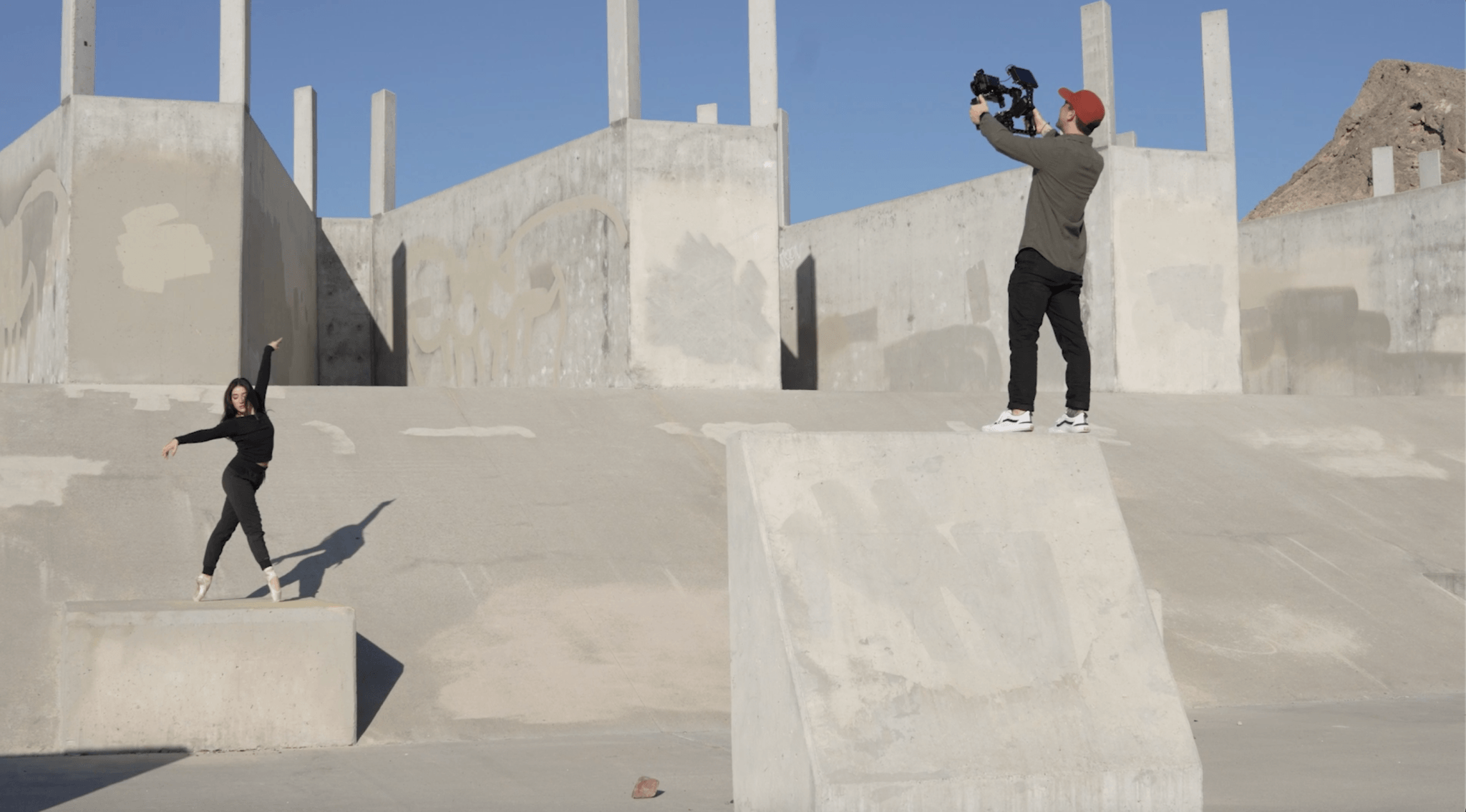The Sony FX3 is Sony's smallest cinema camera, but don't let that fool you. What Sony did with this camera is just outstanding. So, whether you're a big-time cinematographer, documentarian, or solo shooter, the FX3 has you covered.
The FX3 is a full-frame cinema camera, meaning it has a full-frame sensor. So, the bigger the sensor, the better the low-light and the shallower depth of field you get. Sony really held nothing back with this camera. You get 5-axis in-camera image stabilization for smoother shots. The camera has a 3.5 mm audio and headphone jack and also comes with an XLR top handle. You're able to input two XLRs straight into the camera. Pretty much eliminates the need for an external recorder. Unlike most cameras, this camera has six quarter-inch thread holes on every side, so you can mount it anyway. It also makes mounting vertically for social media quick and easy and basically eliminates the need for a cage, which is kind of nice.
The Sony FX3 has a fully articulating screen, which is great for low angles or high angles. I also found the touch screen easy for tracking and auto-focus when you need it. The camera is equipped with a zoom rocker on the top. So, if you have a PZ lens, you're able to control the zoom. It's equipped with a full-sized HDMI, a more common and a lot more durable port. This is important when using the HDMI to record to an external recorder or a monitor. The body is dust and moisture-resistant. You are not limited by the environment when you're filming. The most crucial buttons are on one side of the camera. So it's easy to change your settings with one hand. You can easily change all the exposure settings with barely having to move your thumb. You can customize it and pretty much program any button that you'd like.
I am a sucker for tally lights, and this camera has them everywhere. I love the large one on the back and definitely the red indicator on the screen. This screams in my face that I'm recording. This camera also has dual card slots. You can either use SD cards or the new CF express Type-A cards or one of each. The benefit of the new CF cards is that they are faster. You get better video at higher bit rates. The Sony FX3 also has two record buttons, one on the front and one on the top of the camera. This makes it easy to hit record from weird angles.
One of the most important features that bring this camera to the next level is the built-in fan. The fan prevents the camera from overheating, which is important for anyone shooting video. One of the worst things is when you're in the middle of a shot and your camera overheats. Reliability is one of the most important things, and I need to trust that my camera can perform.
You can record 4k up to 120 with audio and full HD up to 240 frames. Internally you can record up to a 10bit 4:2:2. If that's not enough, through HDMI, you can record 16bit RAW.
The ISO range on this camera, of course, is outstanding. We're going to get a bit techie; different color profiles will give you different ISO ranges. For example, if you shoot an S-Log3, your low base is 640, and your high base is 12,800. Yes, 12,800 - you read that right. If you're shooting an S-Cinetone, your low base is 100, and your high base, 2000. Try to stay within these base ISO ranges.
The autofocus, of course, is a game-changer. You might have heard people say you shouldn't use auto-focus when shooting video, but with this camera, I disagree. There are many one-man-band shooters, and having a good, reliable autofocus makes a world of difference. Also, good autofocus allows you to focus on different creative aspects of video, like framing, movement, and lighting. This camera has over 627 autofocus points, covering up to 95% of the sensor. So, whether you're using face, eye, object tracking, or touch tracking, the focus is one less thing you have to worry about.
The camera comes with all the standard color profiles you know and love from Sony, plus S-Log3 and S-Cinetone. With S-Log3, you get 15 stops of dynamic range, and with S-Cinetone, you're getting a more true-to-color and softer tonal look.
Sony built this camera for video, but one of the many things I like about it is that you're able to take photographs with it too. I take it with me when I'm location scouting. Not only do I shoot a couple of video clips, but I also shoot stills for reference. So having a camera that does that fits into my workflow, and don't forget that still means you can make some awesome time-lapses as well.
Sony makes a lot of lenses, which really opens up a world of creativity. Some of my favorite lenses are the compact G primes:
Sony FE 24mm F2.8 G
They're pretty much identical in size, which makes them great for gimbal work. You can swap lenses without rebalancing.
So, who is this camera for? This camera checks many boxes for productions, cinematography, documentary, weddings, and videography from beginners to professionals.
I honestly haven't found something I don't like about it. At the end of the day, a camera is a camera. It's just a tool to get you from idea to final product, but this camera really is the best tool for most jobs.












